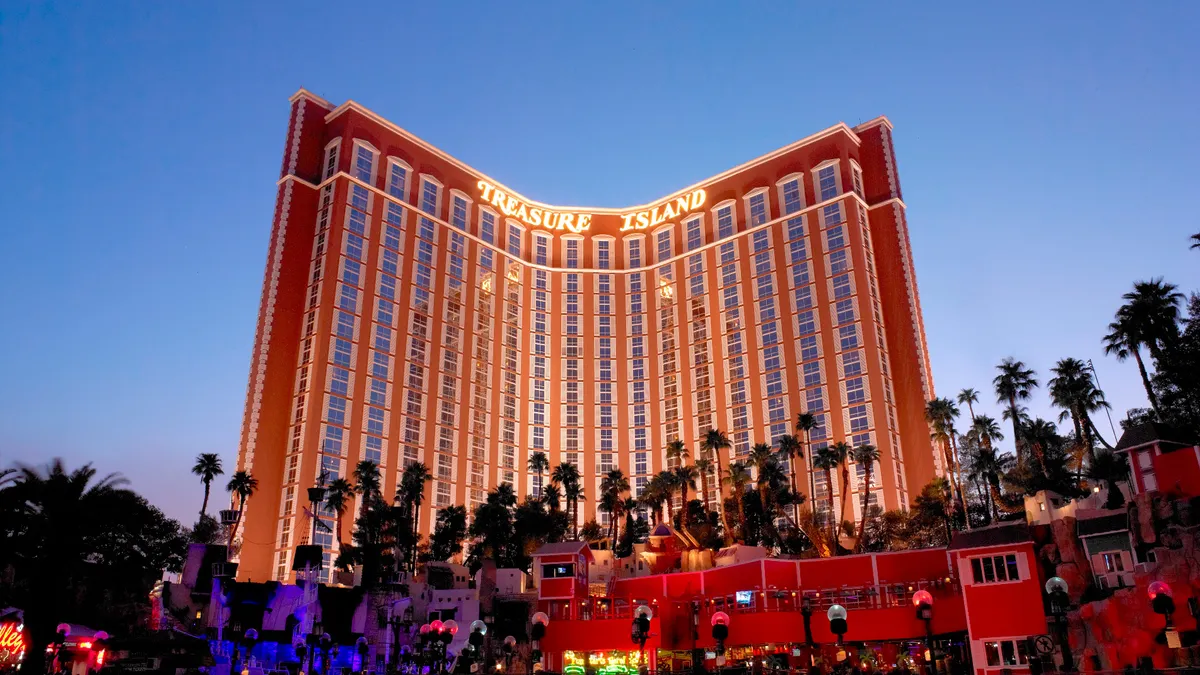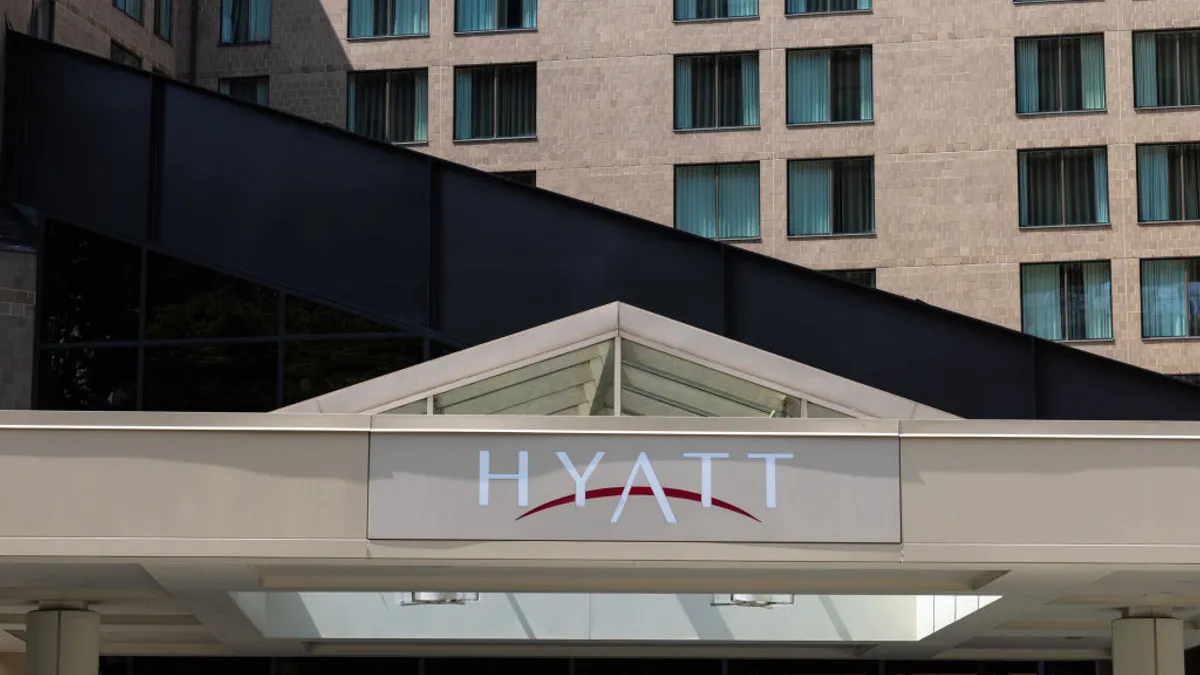Until recently, Accor had only one U.S. hotel in its Handwritten Collection, the 94-room Hotel Stratford in San Francisco.
This week, however, the French hotel company announced a major addition to the collection, partnering with business and casino owner Phil Ruffin to bring Las Vegas’ iconic Treasure Island under its umbrella.
Now Treasure Island – TI Las Vegas Hotel & Casino, Handwritten Collection, the resort not only adds 2,884 keys to Accor’s U.S. portfolio, but also marks the company’s first property in Las Vegas.
“It's a milestone moment because it marks the first property for Accor in Las Vegas and a major strategic move in the U.S.,” Accor Global Chief Development Officer Camil Yazbeck said.
Hotel Dive sat down with Yazbeck to discuss Accor’s broader expansion strategy, the future of Handwritten Collection and the company’s plans for the resort.
Treasure Island’s appeal
Treasure Island has been serving guests on the Las Vegas Strip since 1993. The property offers panoramic views of Las Vegas — including of the city’s racing circuit — as well as entertainment venues, wedding chapels, event space and 90,000 square feet of casino and gaming space.
The property also hosts “Mystère,” a Cirque du Soleil show, in its theater, and connects to Fashion Show Las Vegas, the largest mall in the city, according to Accor.
“We've been eyeing the Las Vegas market for years, but we really were waiting for the right partner and the right property to do it,” Yazbeck told Hotel Dive, adding that Accor and Ruffin had a “shared vision.”
Ruffin, a businessman, bought the resort for $755 million from MGM Resorts International in 2009.
Yazbeck said the resort was a fit for the Handwritten Collection because the brand has an “emphasis on properties with a strong identity and character,” and Treasure Island, in particular, has a “playful spirit” and “unique storytelling.”
Accor’s expansion strategy
Though still nascent in the U.S., Accor’s Handwritten Collection has 25 hotels open globally and 35 in its pipeline.
Las Vegas aligns with Accor’s strategy to expand in key gateway cities in the U.S., which is where international visitors to the U.S. often want to be, according to Yazbeck.
Yazbeck said the company’s global reach — particularly its 100 million-member loyalty program — made a partnership appealing to the Las Vegas resort. Of the program’s members, some 45% are in Europe, 13% in China, 15% in Southeast Asia and 10% in South America, “so we do bring a lot of value-add from these key feeder markets,” he said.
In recent earnings calls, Las Vegas resort operators cited declining international visitation, particularly from Canadian travelers. In May, the World Travel & Tourism Council projected the U.S. would lose $12.5 billion in international visitor spend this year.
At the NYU International Hospitality Investment Forum last month, Accor CEO Sébastien Bazin said the company “missed America” by not expanding in the U.S. earlier: “Twenty-five years ago, we should have played here,” he said.
Yazbeck, meanwhile, said the Treasure Island partnership opens up further avenues for Accor’s expansion, particularly in the casino segment, which he described as “a natural evolution” for Accor’s “augmented hospitality.”
When asked if Accor might consider more casino resorts in the future, he said, “As long as it fits with the strategy that we set in key gateway cities, and it’s a quality hotel and it’s a great partnership with the right owner … then yes, for sure.”










